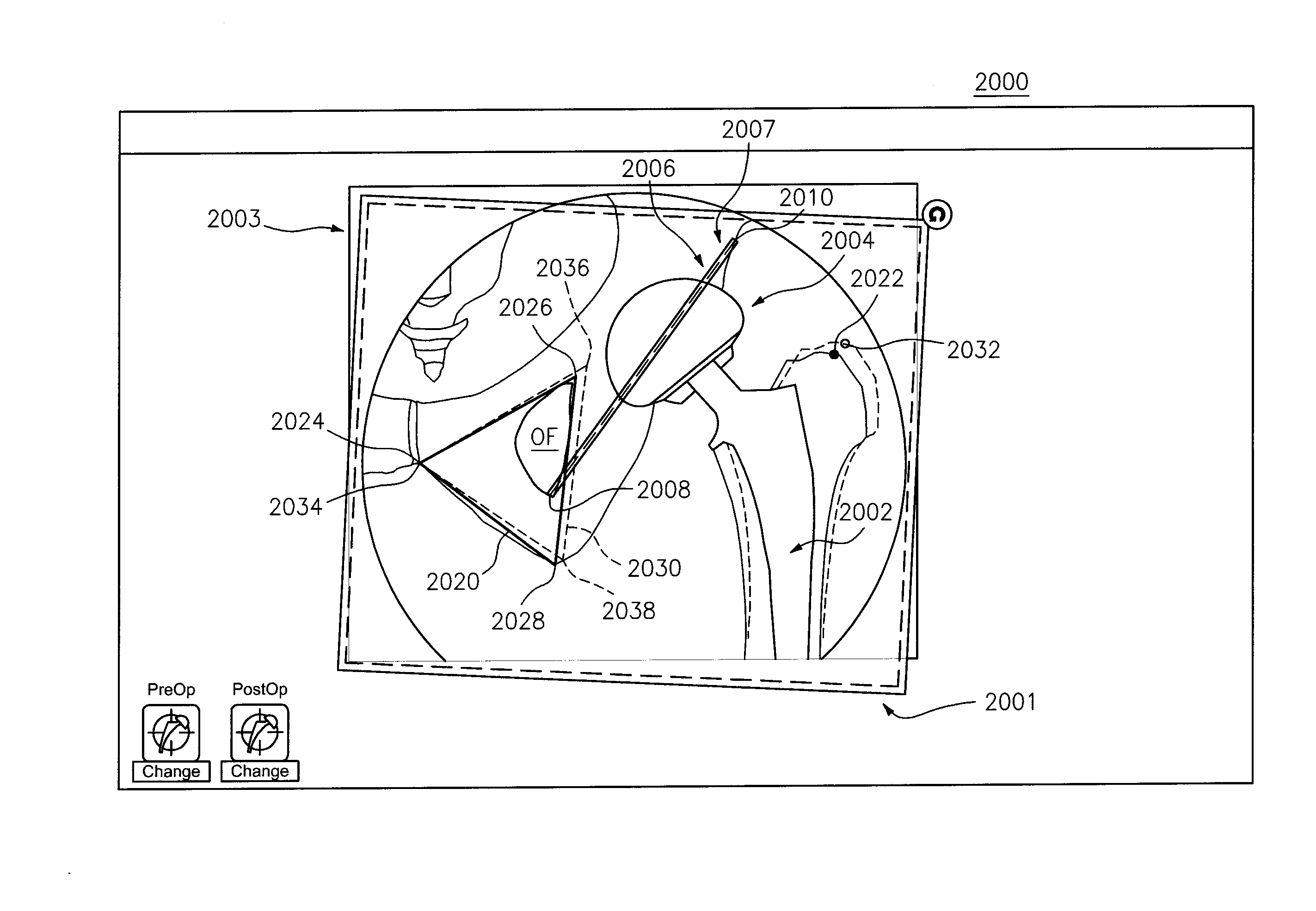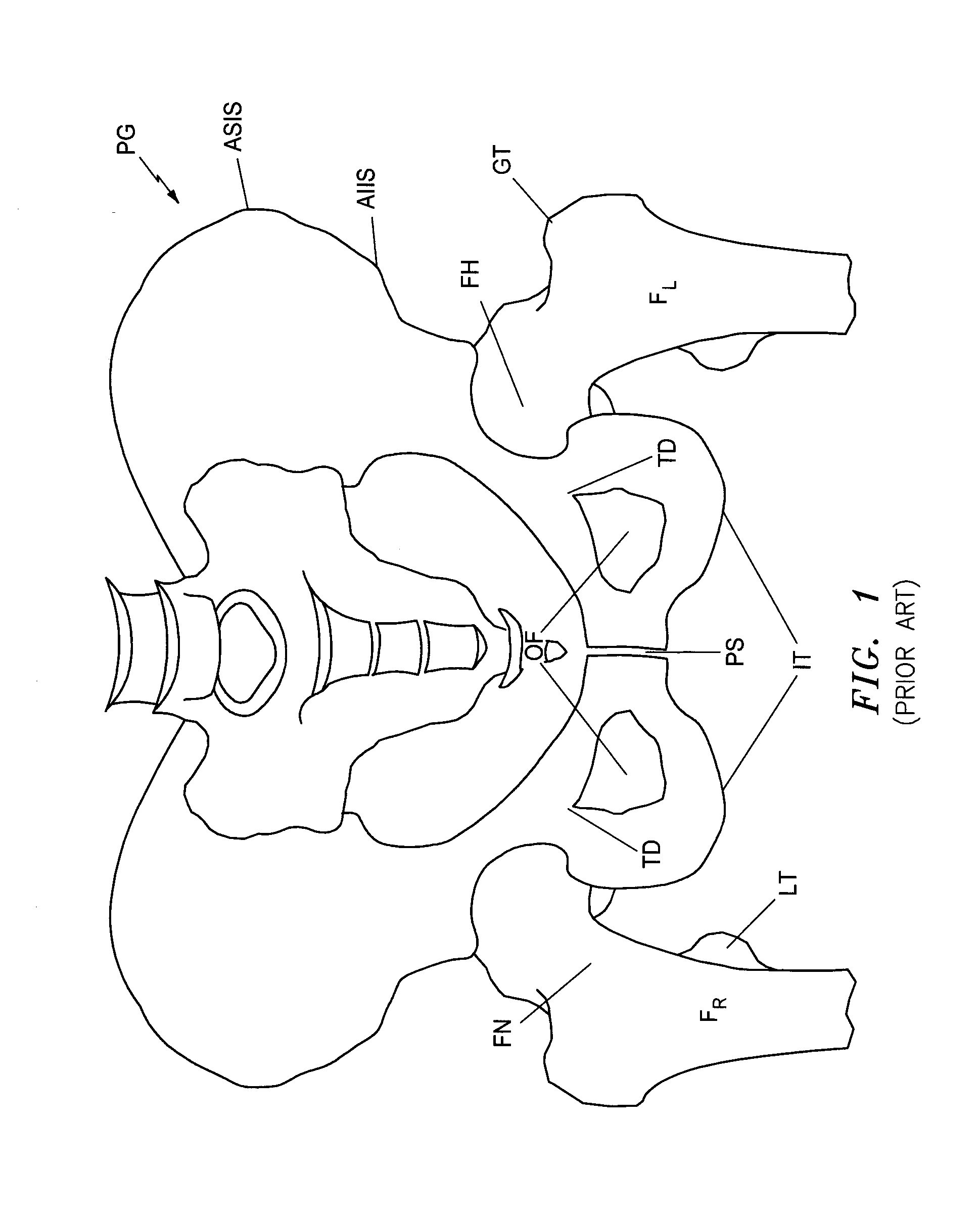Systems and Methods for Intra-Operative Image Analysis
a system and image technology, applied in the field of image analysis, can solve the problems of inability to accurately scale, factor is inaccurate, and preoperative scaling technique has inherent accuracy limitations, and achieve the effect of accurate and effective scaling, adjustment and/or calculation
- Summary
- Abstract
- Description
- Claims
- Application Information
AI Technical Summary
Benefits of technology
Problems solved by technology
Method used
Image
Examples
Embodiment Construction
[0106]This invention may be accomplished by a system and method that provides intraoperative guidance via analysis including at least one of scaling, calculations, comparisons, and alignment for operative images taken during surgery by comparing them with preoperative ipsilateral images and / or contralateral images, taken before or during surgery, of comparable portions of a patient. At least one stationary base is selected in each image to serve as a reference during the image analysis. Broadly, some techniques according to the present invention, referred to by the present inventors as “Image Overlay”, place one image over another image during analysis to generate a combined overlapped image, while certain other techniques according to the present invention, referred to by the present inventors as “Reverse Templating” or “Templating Technique”, place a digital template first on a properly-scaled intra-operative image and then on a scaled pre-operative image during analysis.
[0107]In ...
PUM
 Login to View More
Login to View More Abstract
Description
Claims
Application Information
 Login to View More
Login to View More - R&D
- Intellectual Property
- Life Sciences
- Materials
- Tech Scout
- Unparalleled Data Quality
- Higher Quality Content
- 60% Fewer Hallucinations
Browse by: Latest US Patents, China's latest patents, Technical Efficacy Thesaurus, Application Domain, Technology Topic, Popular Technical Reports.
© 2025 PatSnap. All rights reserved.Legal|Privacy policy|Modern Slavery Act Transparency Statement|Sitemap|About US| Contact US: help@patsnap.com



